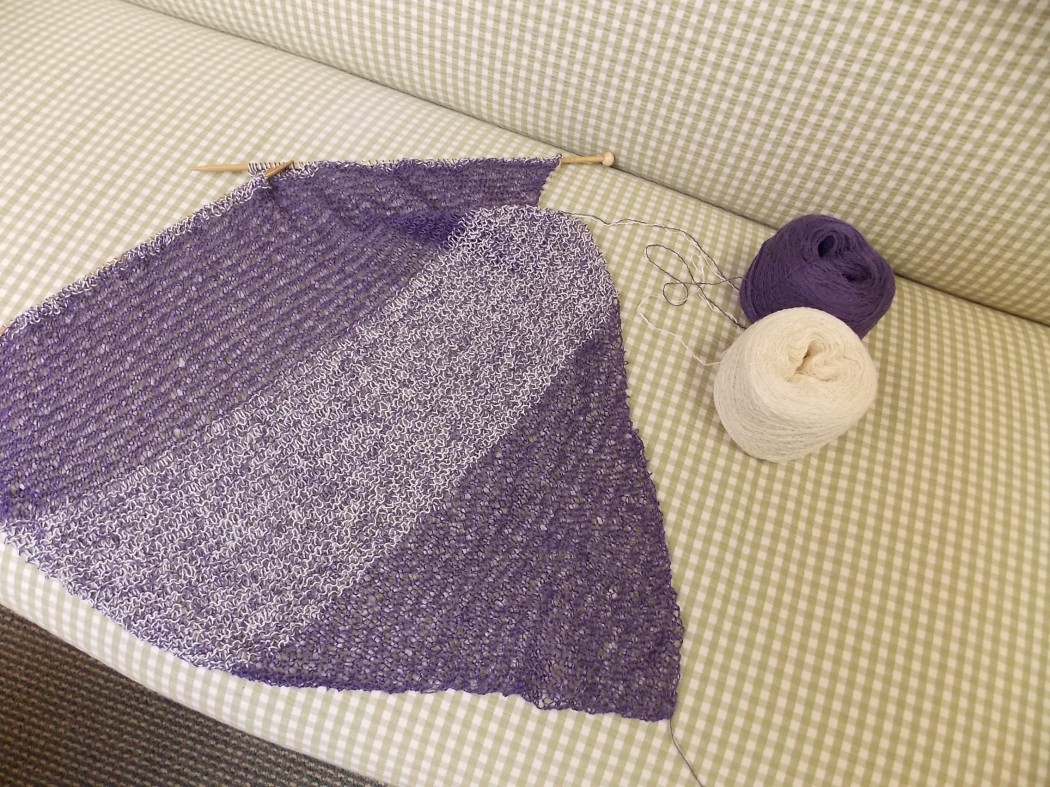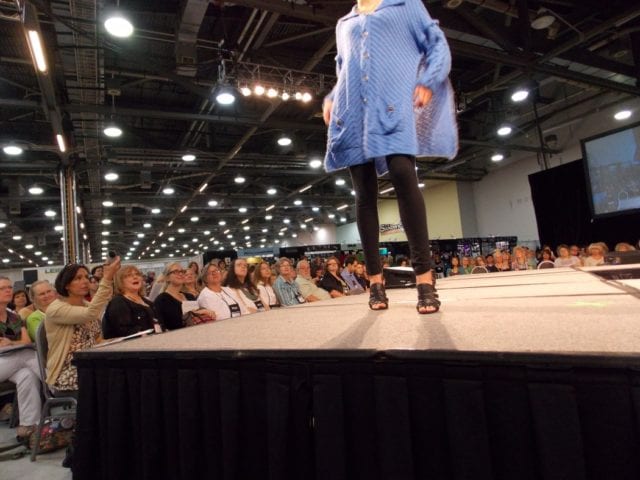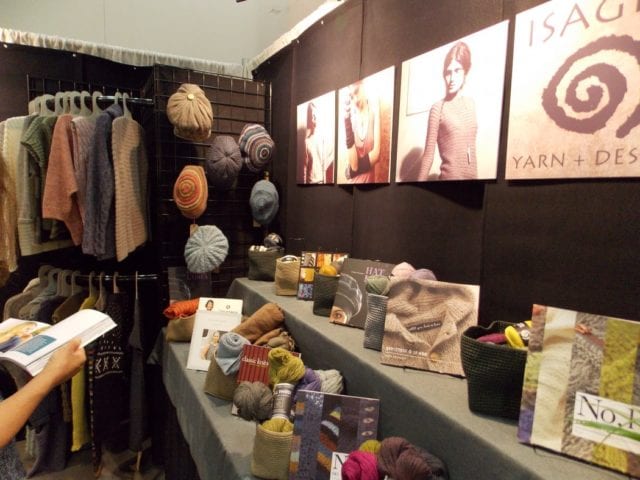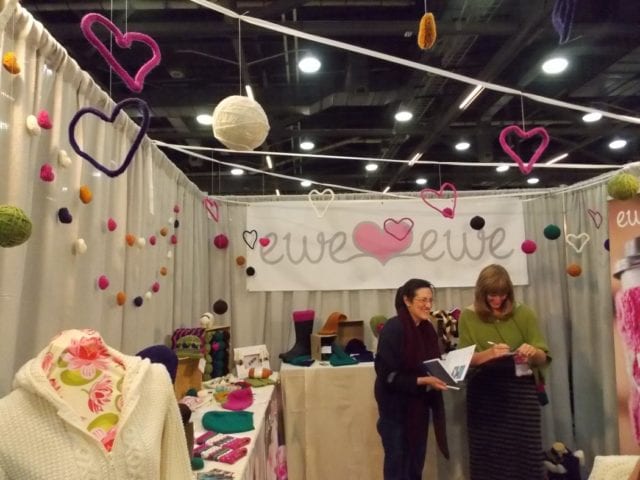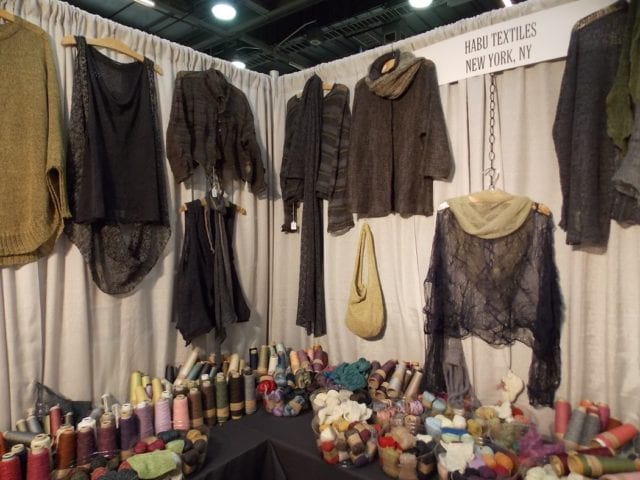If you’ve been to the shop in the past couple of weeks, you’ve likely seen me with a little ball of lace-weight purple yarn and a pair of bamboo needles. I’m working on a sample for the shop, a simple garter stitch shawl in the style of the Alpaca 1 shawl, which has become a favorite free HYS pattern.
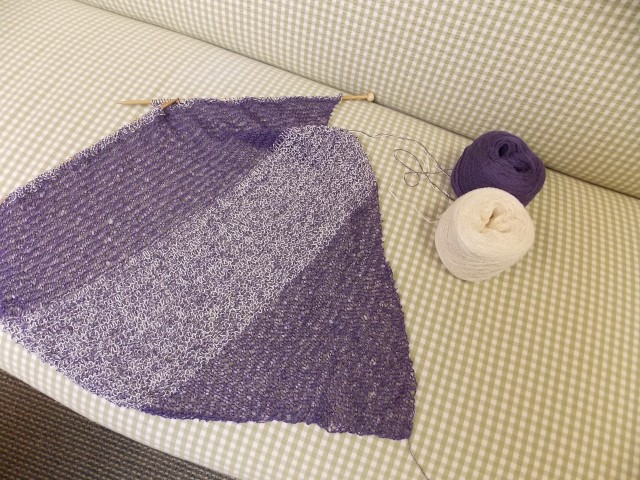
My purple lace-weight is a slightly textured cotton from Habu, a yarn that got some attention on the blog last year.
To add interest to this triangular shawl, I’ve added big, thick stripes by holding a strand of white Habu cotton together with the purple. This creates an interesting marled color, and a slightly different texture, as well, though the stitches remain blissfully simple. All I have to remember to do is increase one stitch at the beginning of every row, and then knit, and watch as it slowly grows. The fabric is soft, stretchy, and tremendously lightweight; perfect summertime knitting.
If you’d like to see and feel this feather-light piece, come by the shop, where you can get a garter stitch shawl started for yourself in single or double strands of cotton or any other lace-weight yarn that strikes your fancy. See you at the shop!

